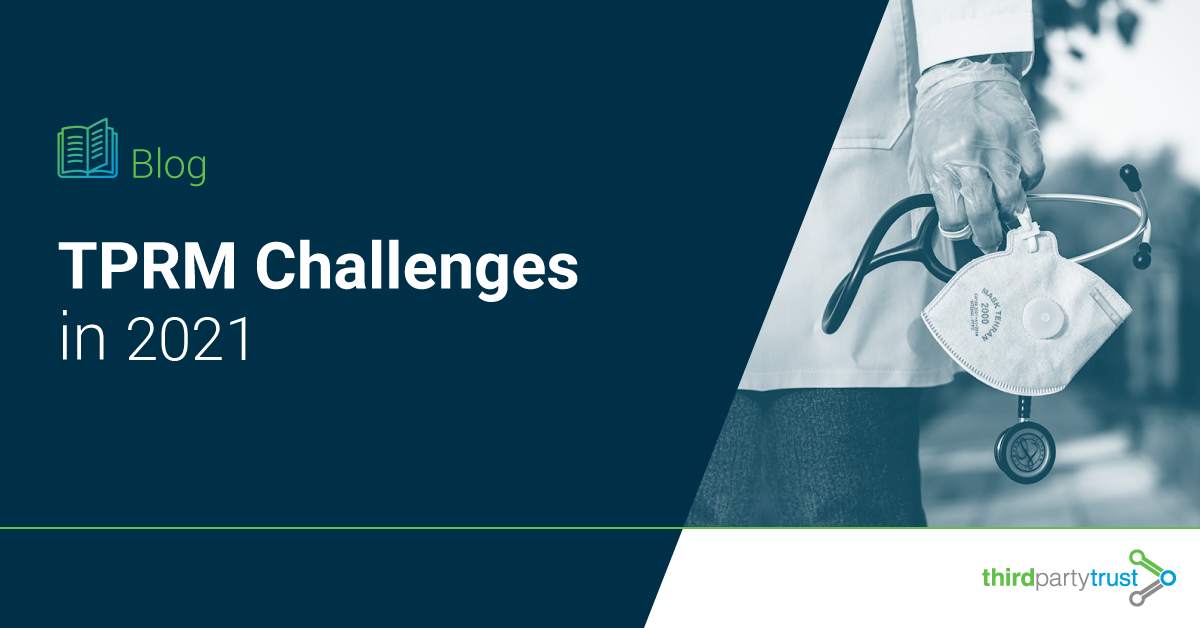3 TPRM Challenges Facing Organizations in 2021
TPRM challenges have shifted in today’s global, outsourced, and optimized supply chains, where organizations build up a business network of third-parties. Hundreds and thousands of suppliers, vendors, contractors and service providers for technology services, manufacturing, quality control, assurance and logistics interact in a complex ecosystem, which can make it difficult to understand the inherent risk of this huge network. Here are the main TPRM challenges for 2021 and how to face them.
Challenge #1 Scalability
Organizations of all industries and sizes partner with an ever-increasing number of vendors—many of which are moving their applications and data services to the cloud. As a result, it’s ineffective to individually assess the information security and compliance of each one of them.
As processing information in the cloud becomes more prevalent, organizations need to set up a program to ensure that data no longer in their physical possession is still secured appropriately—according to both internal policies and industry regulations like HIPAA or GDPR.
Solution: Automation of repetitive and time-consuming tasks of traditional TPRM programs. Sending over spreadsheets with hundreds of questions, following up via email, chasing third-parties to ask for their latest certifications and assurances, and discussing findings in email threads now belong in the past.
Dedicated TPRM platforms streamline this process to assess, monitor and mitigate risk more efficiently throughout the third-party relationship. Ultimately offering a proven method for assessing the information security and compliance levels of third-party vendors.
Challenge #2 Business Continuity
The covid19 pandemic disrupted global supply chains, exposing weaknesses, legacy issues, and the need for greater visibility in order to adapt more easily to new ground rules, such as an entire spectrum of remote workers or stalled shipments.
A small deviation from plan at one end can have large and costly effects up and down stream. Operational issues in the supply chain can impact information security, business continuity, collaboration, and compliance.
Traditionally, the security focus on third-party risk management (TPRM) has been on how to protect data, not on outsourced services and resources. Covid19 calls for a reevaluation of priorities and things to consider in 2021.
Solution: Try to identify the outsourced business process that could be impacted from a continuity aspect. Are you asking questions beyond data security in your third-party assessments? Are you identifying the risks in your third-parties’ business processes?
With the right TPRM tool, you’re not limited to asking about cybersecurity, you have the ability to ask about any type of information and technology risk that you may identify in your risk profile. You can add all of this to your assessment and monitoring process and thus take care of the availability aspect (internet connections, human processes, and more).
Read More: Data Security is Critical to TPRM, but don’t forget about Business Continuity
Challenge #3 The Maturity Journey
The journey towards full TPRM maturity will probably remain slow in 2021, as organizations adapt to the “new normal” and come across new expectations that change the ultimate goals.
Emerging risk factors create new obstacles, as no organization can be considered fully mature until it has addressed the latest types of risks. Luckily, technology is here to help, with the possibility to adapt and customize TPRM initiatives to streamline the process, eliminate confusion, reduce supply chain risk, and ultimately increase the security posture of the entire third-party ecosystem.
Now you know how to prepare to face the TPRM challenges 2021 is bringing upon us.
To learn more about how ThirdPartyTrust can help you manage third-party risk across your organization, request your free trial now:




